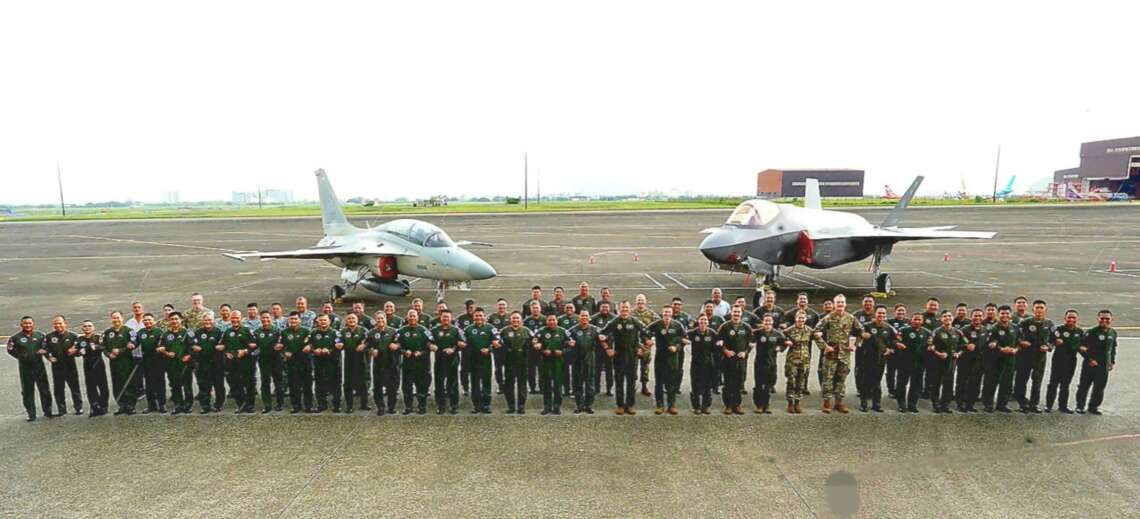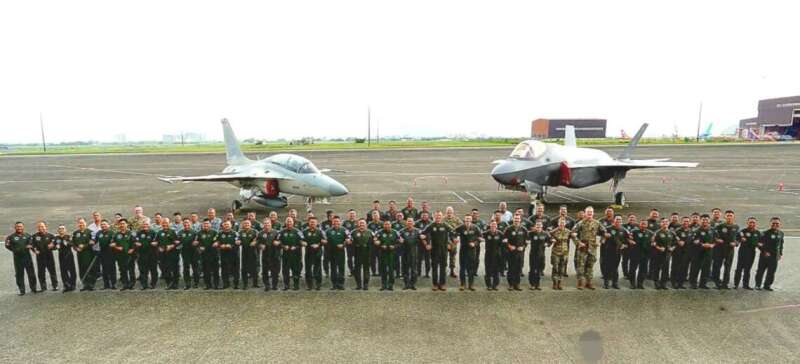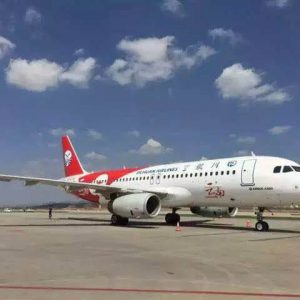China has not fought a war since 1979, when it conducted a stunted foray across the land border into Vietnam. Thus, it is difficult to assess just how effective the PLAN is amidst all its reforms….reports Asian Lite News
Should China ever try to capture Taiwan, and end up at war with the US, much of the conflict would be fought underwater by submarines. Thus, these silent killers of the deep in the People’s Liberation Army Navy (PLAN) would play a critical role.
In May, Chairman Xi Jinping replied to a letter sent to him by a PLAN submarine crew, this marking a decade since the strongman visited the same vessel for lunch and a briefing with the crew. Now, ten years later, Xi reminded them “to continuously improve their ability to fulfil missions and tasks, and strive to become an elite force with overall competency”. He also stated that the PLAN’s submarine force “is tasked with glorious missions and bears great responsibility”. Xi also called on the force to make greater contributions to achieve goals set for the PLA’s centenary in 2027. He praised them for having “taken the initiative to shoulder responsibilities, achieving a series of breakthroughs and fulfilling various tasks excellently”.
Xi thus recognizes the importance of submarines to the PLA, and he has prioritized the force’s expansion and modernization. Of course, China has not fought a war since 1979, when it conducted a stunted foray across the land border into Vietnam. Thus, it is difficult to assess just how effective the PLAN is amidst all its reforms.
Of course, the Pentagon and US Navy (USN) will have formed detailed critiques of the PLAN and its relative strengths and weaknesses, but those conclusions remain highly classified. Outsiders must therefore look elsewhere to pick up analyses of the quality of China’s military undersea capabilities.
Fortunately, ANI was privy to proceedings from the China Maritime Studies Institute (CMSI), which is part of the Center for Naval Warfare Studies at the US Naval War College. This institute in Rhode Island held an academic conference from 11-13 April, and comments were made about developments, capabilities and trends in Chinese undersea warfare.

This underwater realm is a core component of Chinese naval strategy. Within the so-called First Island Chain, the PLA would need to achieve sea control in a time of war. Beyond this chain in the Pacific, and in the Indian Ocean, the PLAN must also perform effective undersea operations to counter USN superiority and to deter the involvement of third parties in any East Asian conflict.
According to PLA writings, “seabed warfare” (which includes undersea cables) and “the deep sea” are realms of growing importance for military competition. China is deliberately leveraging military-civil fusion to adopt new technologies to help the PLA seize the initiative in this watery domain.
Furthermore, the Chinese military is enhancing its ability to boost its awareness of and to forecast the undersea environment. However, its meteorological and oceanography capabilities “significantly lag those of the USN,” according to the AMSI conference. Indeed, “This comparative ignorance of the ocean battlespace environment is a major impediment to PLAN submarine and anti-submarine warfare (ASW) operations, especially beyond the First Island Chain.”
China views undersea warfare as an integrated system of systems, and it realizes it is playing catchup. “PRC analysts fear strong US and allied undersea capabilities, but the PLAN is determined to close the gap as much and as quickly as possible while pursuing superiority of its own in other areas (e.g. through joint operations with the PLA Rocket Force).”
Interestingly, despite Soviet willingness to sell all manner of military technologies to China, it refused to do the same with nuclear-powered submarines. China initially thus had to find its own way, until Russia began to offer more technological support after 1996.
The obvious question is, just how good are Chinese submarines nowadays? The CMSI assessed: “In recent years, China has seen tremendous expansion in the shipbuilding facilities that can produce both conventional and nuclear-powered submarines. Nevertheless, China’s technological progress in submarine construction has been uneven, with enduring weaknesses in propulsion and quieting. To compensate, China has exploited its partnership with Russia to obtain cutting-edge submarine-related technologies.”
Incidentally, the PLAN operates the world’s largest fleet of diesel-electric submarines equipped with air-independent propulsion (AIP). AIP allows submarines to stay submerged for much longer, without having to surface or snorkel to feed air into the ship’s engines. Diesel-electric submarines, using batteries or AIP, are also very quiet, and are especially useful in coastal environments.
The latest Type 039C Yuan-class submarine has AIP, and it features an angled sail and
integrated towed-array sonar, the latter being installed for the first time on a Chinese
submarine.
In terms of conventional submarines, the PLAN has an estimated eleven older Type 035G/035B Ming-class boats still in service; ten Project 636/636M Kilo-class boats from Russia; at least 15 Type 039 Song-class submarines; and four Type 039A Yuan-class, 14 Type 039B Yuan-class and two Type 039C Yuan-class boats. This adds up to approximately 56 boats, the largest such fleet in the world.
As for the PLAN’s nuclear-powered fleet, China has modified technology that it received from Russia in areas such as nuclear reactors, sound isolation mounts, towed arrays and torpedoes. Nearly 50 years after China introduced its first Type 091 nuclear-powered attack submarine (SSN), now “China is on the verge of producing significantly more advanced nuclear-powered submarines than it could in the past,” AMSI noted.
The forthcoming Type 095 SSN could potentially approach the capability of Russia’s Improved Akula I boats, AMSI estimated. Meanwhile, the future Type 096 nuclear-powered ballistic missile submarine (SSBN) could reach similar levels to Russia’s Dolgorukiy-class SSBNs. AMSI analysts predicted: “Should China jump from an early Victor III-like platform to an Improved Akula I-like platform, the implications for the US and its Indo-Pacific allies would be profound.”
Elsewhere, China has begun to prioritize mine warfare too. While it has a comprehensive and sophisticated sea mine program, it lags greatly in mine countermeasures. Despite this, the PLAN has a large inventory of diverse types of sea mines, and it routinely rehearses mine-laying. It has modern mine countermeasures vessels and remotely operated vessels.
The next step will be better integrating unmanned surface vessels (USV) and unmanned underwater vessels (UUV) into its mine warfare force. It “has or is poised” to do so, according to AMSI, especially with larger USVs and UUVs. “PLAN experts generally assume that China’s development of autonomous platforms for naval operations lags behind USV and UUV developments in the US,” AMSI elaborated.
There are weapons with which the PLA can threaten American submarines, and these include the development of a new heavyweight torpedo (comparable to the American MK 48 ADCAP) and improved sonars. Additionally, “The adoption of the YJ-18 and CJ-10 submarine-launched cruise missiles poses major threats to both the US surface fleet and US bases and installations in the Western Pacific.”
What about Chinese submariners and the quality of personnel, then?
AMSI discussed this important topic in their conference too. In response to Xi’s prioritization of the submarine force, PLAN “training is adapting to recent changes in military strategy and doctrine. Submarine crews now train more regularly under ‘realistic’ combat conditions involving longer durations and greater distances. Massive changes occurred in China’s submarine force over the past six years. Many new subs came online and older platforms were decommissioned, necessitating major reshuffling of submarines among fleets.”
The PLAN takes in about 200 new submarine officers annually. Up to 60 high-performing former enlisted navy personnel are recruited for command-track academic education, while out of about 140 high school recruits, some 40 of the top performers go through the PLAN Engineering University. However, these engineering tracks are pretty much career dead ends, and so these people often become political commissars instead.
Approximately 100 other high school recruits enter the PLAN Submarine Academy each year, but these are generally the lowest-performing recruits of any of the 18 PLA professional military education institutions. These cadets learn about navigation, communications and operations, but undesirable submarine conditions and non-transferability of skills upon discharge means the PLAN submarine force usually receives the worst candidates.
AMSI raised issues for Chinese submariners: “Rapidly incorporating new platforms, technologies, concepts and communications requirements strains personnel. This is mitigated by increased attention to effective training, personal care and physical and mental support and recovery. PLAN submarines often deploy with personnel senior to the commanding officer, which subverts the shipboard chain of command, stresses the system and complicates decision-making.”
Despite limitations, the PLAN’s submarine force is inexorably growing. AMSI, therefore, pointed out: “USN undersea advantages are challenged, but even as the PLAN develops an undersea second-strike capability, its primary undersea operational focus remains anti-surface warfare.” China’s growing sea-based nuclear second-strike capability means it is more confident about managing any attempted US intervention in a Taiwan conflict scenario, especially its own vulnerability to American coercion. In fact, the USN is constrained by the number of submarines it has available, and its qualitative advantage is under threat. AMSI thus recommended, “It should be a topmost priority to arrest this trend and preserve the undersea as an area of decided US advantage.”
One can therefore understand why China is so opposed to Australia introducing SSNs under the AUKUS alliance. “AUKUS offers a valuable force multiplier with key allies, but is unlikely to fully compensate for the erosion of US advantages on its own.” AMSI further recommended: “Because PLAN submarine crews are becoming increasingly adept at pursuing straightforward missions, US and allied forces must develop concepts of operations to impose uncertainty on PLAN submarine commanders and confront them with situations outside predicted parameters. This will slow decision cycles as commanders consult potentially complex, inefficient PLAN chains of command.”
PLA threats to American submarines include helicopter and fixed-wing ASW aircraft equipped with magnetic anomaly detectors, surface search radar, dipping sonar and sonobuoys; light detection and ranging technologies; space-based synthetic aperture radar; optical infrared sensors that detect thermal wakes and bioluminescence; ocean surveillance ships equipped with towed array sonar; and seabed sensor arrays. AMSI noted, though, “None of these technologies is likely to shift the undersea balance in the near term.”
Even though the PLAN might want to enlarge its submarine force in the future – for it has already expanded shipyards – no expansion of the officer pipeline is yet discernible. (ANI)














